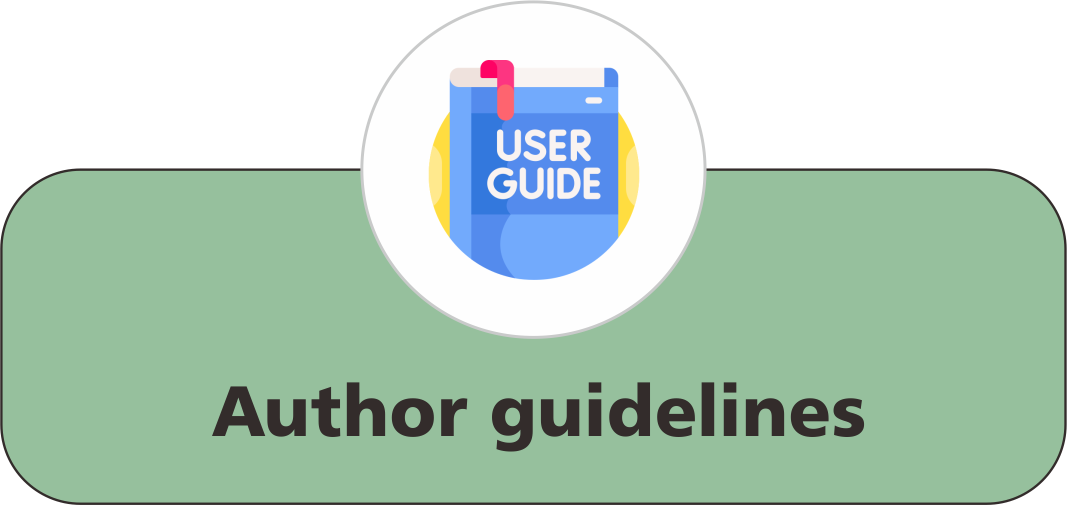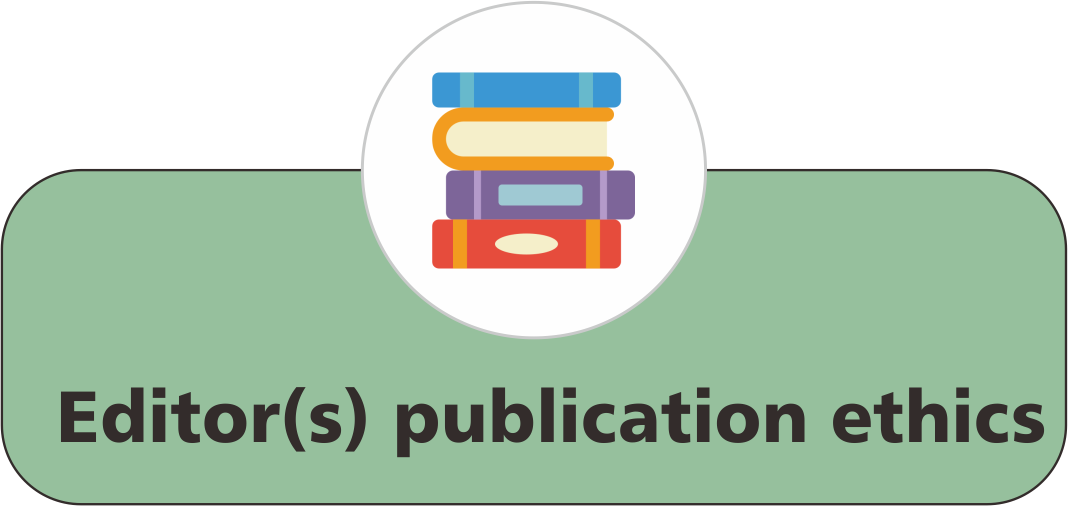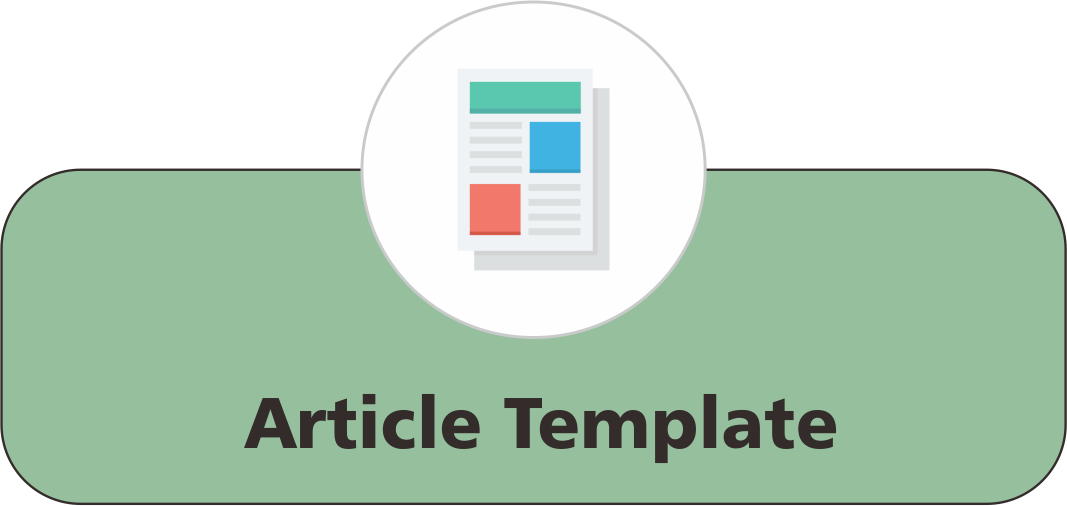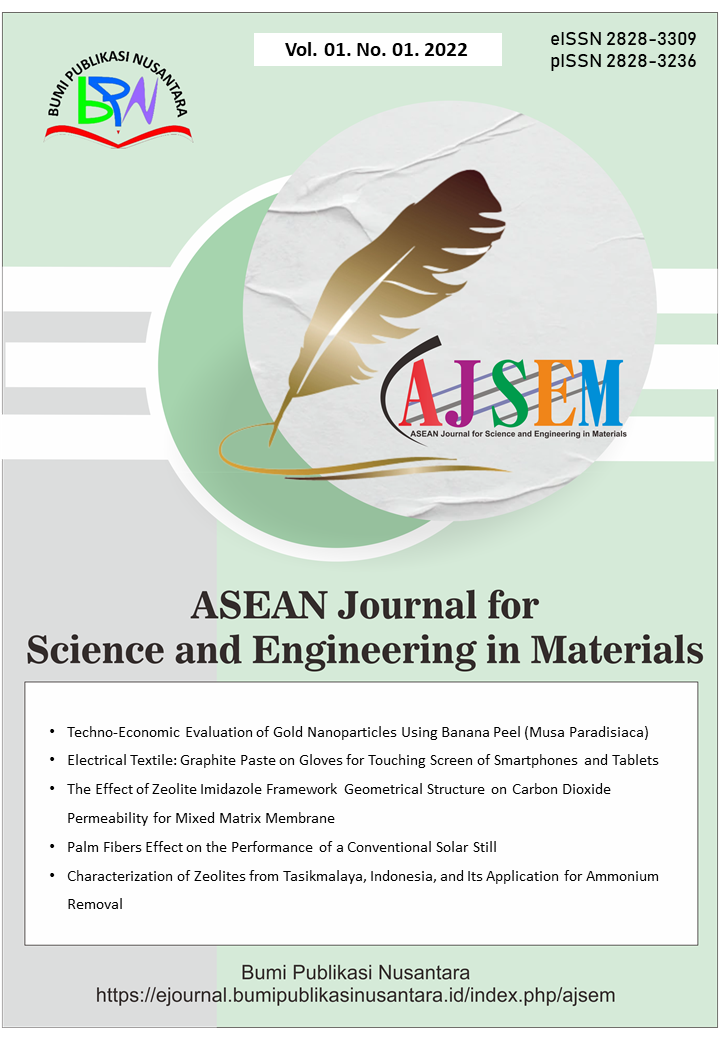Upcycling Polymeric Waste into Interpenetrating Polymer Network Adsorbents for Sustainable Wastewater Treatment
 ), Rana J. Kadhim(2), Elaf Abd Al-Azal Ihsan(3), Sinan A. Al-Haddad(4),
), Rana J. Kadhim(2), Elaf Abd Al-Azal Ihsan(3), Sinan A. Al-Haddad(4),
(1) University of Technology-Iraq
(2) University of Technology-Iraq
(3) University of Technology-Iraq
(4) University of Technology-Iraq
 Corresponding Author
Corresponding Author
Abstract
This study reports the sustainable synthesis, characterization, and application of Interpenetrating Polymer Networks (IPNs) derived from post-consumer polystyrene kitchenware and epoxy resin residues as a cost-effective adsorbent for amoxicillin removal from wastewater. The conversion of these polymeric wastes into functional materials aligns with circular economy strategies. Batch adsorption experiments were carried out to examine the effects of key operational parameters, including adsorbent dosage, contact time, and solution pH. The results showed a maximum removal efficiency (96%) at an adsorbent dosage of 0.1 g and pH 5. Kinetic analysis indicated that the adsorption process followed a pseudo-second-order model, suggesting chemisorption as the dominant mechanism, with an equilibrium adsorption capacity (qe) of 8.13 mg/g. Isotherm modeling demonstrated that the Langmuir model provided the best fit, confirming monolayer adsorption on a homogeneous surface, while Temkin parameters indicated favorable adsorption energetics. Overall, these findings highlight the potential of waste-derived IPNs as eco-friendly and highly effective materials for removing pharmaceutical contaminants from aqueous environments, contributing to the advancement of sustainable wastewater treatment technologies.
Keywords
References
Adeel, M., Grasel Frois, C. F., Berruti, I., Sirtori, C., Malato, S., and Rizzo, L. (2025). Activation of peroxymonosulfate by(sunlight)FeCl3-modified biochar for efficient degradation of contaminants of emerging concern: Comparison with H2O2 and effect of microplastics. Chemical Engineering Journal, 507, 160782.
Al Kindi, G. Y., and Al-Haidri, H. A. (2023). Removal of pharmaceutical residues in 2D and 3D electrochemical processes by using orange peels. Innovative Infrastructure Solutions, 8(6), 171.
Alenzi, A., Hunter, C., Spencer, J., Roberts, J., Craft, J., Pahl, O., and Escudero, A. (2021). Pharmaceuticals' effect and removal, at environmentally relevant concentrations, from sewage sludge during anaerobic digestion. Bioresource Technology, 319, 124102.
Al-Kindi, G. Y., and Al-Haidri, H. A. (2021). The removal of ibuprofen drugs residues from municipal wastewater by Moringa Oleifera Seeds. Journal of Ecological Engineering, 22(1), 83–94.
Al-Kindi, G. Y., and Alnasrawy, S. T. (2022). Tetracycline remove from synthetic wastewater by using several methods. Journal of Ecological Engineering, 23(5), 137-148.
Al-Kindi, G. Y., Ani, F. H. A. L., Al-Bidri, N. K., and Alhaidri, H. A. (2021). Diclofenac removal from wastewater by activated carbon. IOP Conference Series: Earth and Environmental Science, 779(1), 012091.
Chai, W. S., Cheun, J. Y., Kumar, P. S., Mubashir, M., Majeed, Z., Banat, F., Ho, S.-H., and Show, P. L. (2021). A review on conventional and novel materials towards heavy metal adsorption in wastewater treatment application. Journal of Cleaner Production, 296, 126589.
Chen, Z., Zhang, L., Song, Y., He, J., Wu, L., Zhao, C., Xiao, Y., Li, W., Cai, B., Cheng, H., and Li, W. (2015). Hierarchical targeted hepatocyte mitochondrial multifunctional chitosan nanoparticles for anticancer drug delivery. Biomaterials, 52, 240–250.
Codina, A. S., Lumbaque, E. C., and Radjenovic, J. (2025). Electrochemical removal of contaminants of emerging concern with manganese oxide-functionalized graphene sponge electrode. Chemical Engineering Journal, 508, 160940.
Dragan, E. S. (2014). Design and applications of interpenetrating polymer network hydrogels. A review. Chemical Engineering Journal, 243, 572–590.
Fraiha, O., Zaki, N., Hadoudi, N., Salhi, A., ElYoussfi, A., Amhamdi, H., and Ahari, M. (2024). Adsorption-based removal of amoxicillin from aqueous environments: A mini review. E3S Web of Conferences, 527, 03012.
Gao, J., Wu, J., Chen, S. and Chen, Y. (2024). Nitrogen removal from pharmaceutical wastewater using simultaneous nitrification–denitrification coupled with sulfur denitrification in full-scale system. Bioresource Technology, 393, 130066.
Harris, J. D., Wade, E. A., Ellison, E. G., Pena, C. C., Bryant, S. C., McKibben, N. L., and Chase, J. R. (2022). Zinc–Acetate–Amine Complexes as Precursors to ZnO and the Effect of the Amine on Nanoparticle Morphology, Size, and Photocatalytic Activity. Catalysts, 12(10), 1099.
Hayouni, W., Pistre, S., Chkir, N., and Zouari, K. (2025). Contaminants of emerging concern (CECs) as indicators of pollution and hydrological processes in an anthropized Mediterranean water basin: Case of the Kasserine Basin (Central Tunisia). Science of The Total Environment, 984, 179744.
Hu, J., Liu, Y., Zhang, X., Chen, Z., Tang, M., Lyu, Y., You, X., Helbling, D. E., and Sun, W. (2025). Integrated wide-scope and class-specific nontarget analysis reveals a broad spectrum of organic micropollutants in an urban river. Water Research, 285, 124145.
Ibrahim, T. N. B. T., Feisal, N. A. S., Kamaludin, N. H., Cheah, W. Y., How, V., Bhatnagar, A., Ma, Z., and Show, P. L. (2023). Biological active metabolites from microalgae for healthcare and pharmaceutical industries: A comprehensive review. Bioresource Technology, 372, 128661.
Jin, S.-R., Lee, K.-Y., Park, S.-H., Cheon, J.-M., Kang, S. Bin, and Cho, C.-W. (2025). Amine-functionalized cellulose for the efficient removal of anionic micropollutants from aqueous environments: Development, characterization, and modeling. Journal of Water Process Engineering, 75, 107940.
Kargule, B. B., Al-Asadi, M., Al-Anssari, S., Aljibori, H. S. S., Hamzah, H. T., Tastambek, K. T., Abdullah, T. A., and Abdullah, O. I. (2025). Sustainable removal of dyes from wastewater using eggshell-derived calcium carbonate nanoparticles: Adsorption isotherms, kinetics, and thermodynamic analysis supporting sustainable development goals (SDGs). ASEAN Journal of Science and Engineering, 5(2), 369–394.
Kindi, G. Y. Al, Kadhim, R. J., Azeez, H. S., Abdulrahman, S. M., and Al-Haddad, S. A. (2025). Adsorptive removal of Zinc and Lead Ions from industrial wastewater using Al-Fe Pillared Silty Clay: Kinetic and Isothermal Analysis. Surfaces and Interfaces, 69, 106824.
Laksaci, H., Belhamdi, B., Khelifi, O., Khelifi, A., and Trari, M. (2023). Elimination of amoxicillin by adsorption on coffee waste based activated carbon. Journal of Molecular Structure, 1274, 134500.
Lee, K.-Y., Cho, B.-G., Jin, S.-R., Park, S.-H., Cheon, J.-M., and Cho, C.-W. (2025). Experimental characterization and QSAR modeling of maximum uptake and distribution factor for neutral and ionic micropollutants on granular activated carbon in artificial and real wastewaters. Separation and Purification Technology, 373, 133549.
Lin, X., Chan, K., Kingkhambang, K., Hayashi, H., and Zinchenko, A. (2024). Hydrothermal preparation of pharmaceuticals adsorbents from chitin and chitosan: Optimization and mechanism. Bioresource Technology, 414, 131583.
Liu, T., Li, Y., Du, Q., Sun, J., Jiao, Y., Yang, G., Wang, Z., Xia, Y., Zhang, W., Wang, K., Zhu, H., and Wu, D. (2012). Adsorption of methylene blue from aqueous solution by graphene. Colloids and Surfaces B: Biointerfaces, 90, 197–203.
Mohammed, M. N., Abdullah, O. I., Jweeg, M. J., Aljibori, H. S. S., Abdullah, T. A., Alawi, N. M., Rasheed, R. T., Meharban, F., Hamzah, H. T., and Al-Obaidi, Q. (2025). Comprehensive review on wastewater treatment using nanoparticles: Synthesis of iron oxide magnetic nanoparticles, publication trends via bibliometric analysis, applications, enhanced support strategies, and future perspectives. ASEAN Journal of Science and Engineering, 5(1), 1–30.
Mondal, S., Asif, M. B., Nguyen, T. S., Ismoili, A., and Yavuz, C. T. (2025). Fluorinated porous organic polymers for efficient adsorption of charged organic micropollutants from water. Polymer, 333, 128651.
Munyengabe, A., Banda, M. F., and Augustyn, W. (2025). Predicting plant uptake of potential contaminants of emerging concerns using machine learning models (2018–2025): A global review. Results in Engineering, 27, 106050.
Radu, C.-D., Sandu, I., Diaconescu, R., Bercu, E., and Aldea, H.-A. (2014). Statistic modelling and optimization of the dyeing process of melana fibres with victoria blue b dye in the presence of anionic retarders. Revista De Chimie, 65(7), 797–802.
Sheng, D. P. W., Bilad, M. R., and Shamsuddin, N. (2023). Assessment and optimization of coagulation process in water treatment plant: A review. ASEAN Journal of Science and Engineering, 3(1), 79–100.
Singh, P. K., Bhattacharjya, R., Saxena, A., Thakur, I. S., and Tiwari, A. (2022). Envisaging the role of pharmaceutical contaminant 17-β estradiol on growth and lipid productivity of marine diatom Chaetoceros gracilis. Bioresource Technology, 346, 126642.
Wang, Q., Nie, S., Zietzschmann, F., Rietveld, L. C., Liu, F., Yang, M., and Yu, J. (2025). Mitigating NOM competition against micropollutant adsorption through staged dosing of activated carbon: Loading redistribution of NOM competitors? Separation and Purification Technology, 377, 134270.
Yang, C., Yang, J., Lv, Y., Shi, Y., Cui, D., Yin, M., Li, L., Zhang, J., and Xu, C. (2025). Suspect and non-target screening for emerging contaminants of potential concern and risk assessment in wastewater treatment plants: A case study of a typical industrial city in China. Science of The Total Environment, 989, 179857.
Article Metrics
Abstract View : 192 times
: 192 times Download : 114 times
Download : 114 times
Refbacks
- There are currently no refbacks.
Copyright (c) 2025 Bumi Publikasi Nusantara

This work is licensed under a Creative Commons Attribution-ShareAlike 4.0 International License.









